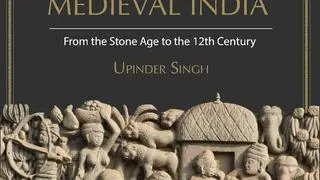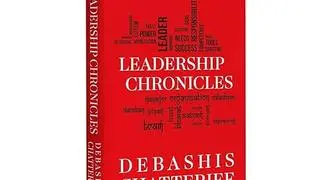Bangladesh, 1971, and Goa, 1961, are two dates closely connected with Indian history and politics. Compared to 1971, the events of a decade earlier has been far less studied and researched. Complexities, size and language might explain this disparity.
Two generations after Portuguese rule ended in Goa, the search is still on here as to what happened, when and why. New perspectives are beginning to emerge, but only very slowly. Given the sudden, unpleasant and contested end of that chapter in Goa’s history, polarised versions of the past are not surprising. Even New Delhi’s views on this issue has since changed, with the BJP turning openly critical of the Nehruvian policy on Goa.
New perspectives
Some new perspectives have come up in more recent times, sometimes straying from the official version.
Somewhat recent memoirs came up here by freedom fighters, Prabhakar Sinari (2017) and Prof. Suresh Kanekar (2011). Adv. Fernando Jorge Colaco (2017), who was a young member of the Goa judiciary when the tumultuous transition happened, came up with another side of the story. But a recent book on the subject from the pen of Valmiki Faleiro, journalist and author, questions much of what many in Goa (and the rest of India) believe about the events of 1961.
One can read this book at many levels. It starts with a brief and racy ride through Goa’s history (Ch 1), then devotes the next three to the build-up to the Indian action in 1961. Three chapters (Ch 5-7) deal with the military operations, while the last three give a breakup of how things changed, and “fallacies” in understanding Goa.
Behind December 1961
Faleiro comes up with quite a few interesting details. Among these, wider Indian interests behind the developments of December 1961 or, what those battling Lisbon’s rule in Goa were doing in the crucial years and even months before the Indian Army marched in.
The strength of his book comes from its details; though at times overwhelming. The author’s knowledge of Portuguese - a sharply declining skill here - has surely helped.
With time, some of the young military-men of the 1960s rose to senior posts, and have now even crossed their 80s. A few penned their memoirs (more in Portugal than in India), and this helped piece together the story.
For instance, Faleiro highlights Indian Defence Minister Krishna Menon’s interest in wanting to contest the Bombay elections in early 1962. The book explains well how this influenced the history of Goa.
It is interesting to view 1961 comprehensively from military, political, and social perspectives. Not all is new though. Some of this material lies scattered across memoirs, books, magazines, unclassified archives, web sites and other obscure sources. Finding it in one place helps to understand the bigger picture.
Details about Goan military-men and freedom-fighters fills in the reader’s understanding. The role of Goa’s first military Governor, KP Candeth (whose father was incidentally connected to the then Indian defence minister Krishna Menon, as his former teacher), comes under scrutiny.
One can at times disagree with some of Faleiro’s interpretations. He suggests (p.15) that Goans could rise well in the Indian Army, but in Portuguese-ruled Goa they could at best climb to being Tenente Coronel (Lt Col). But those who rose in the former British India did so mainly after the post-WWII departure of the British, in 1947. So the comparison might not be fair.
Goan diaspora
He argues that “Portuguese lethargy and a lack of foresight to create a self-sufficient society ...largely caused the Goan Catholic to disperse all over the world... like the Biblical lost tribes”. Today the diaspora is one of Goa’s strengths, and economically beneficial.
Agente Monteiro, the often-remembered notorious bully of the Salazar regime in Goa, and the bridges destroyed by the retreating Portuguese in December 1961, are known to readers in Goa. But the numbers of persons killed both prior to 1961 and during the operations doesn’t show up in textbooks or official-inspired accounts.
One could also ask, how complete is complete? Some questions remain. For instance: when, or in what context, did Nehru make the comment that is often attributed to him: Ajeeb hai Goa ke log. (The people of Goa are a strange lot.)
Also, why did New Delhi so grossly over-estimate the military power and personnel of Portugal in Goa? Faleiro blames the faulty information.
Thirdly, Portugal’s durable but disliked dictator Salazar is widely believed to have desired a ‘scorched earth’ policy for Goa. Faleiro supports this version of history, but leaves one guessing. It hinges the argument on a not-so-explicit quote by Salazar (“our soldiers and sailors can be either victorious or dead”, p.222) and another by a freedom fighter quoting Salazar saying: “Don’t leave stone on stone, destroy everything.” There is also mention of a “secret radio message”. After all these years, one would have expected more detail.
Memory’s tricks
Fallibility of human memory (or even bias) cannot be discounted. A good example is Faleiro’s description of who accompanied Goa’s then archbishop to meet Goa’s last Portuguese Governor-General, Vassalo e Silva to convince him against devastating conflict and “not to destroy Goa”. Three different versions on this come from four authors that Faleiro cites over this.
Fourthly, what was the link between the pre-1961 demand for a plebiscite and the closely-fought ‘Opinion Poll’ (for Goa’s possible merger with Maharashtra) that was held in Goa in 1967? This possibly took attention away from the demand for a deeper plebiscite.
Faleiro tells a lot, but his work still keeps one wanting more. In that sense, a history of so polarised an era can never be “complete”, and there is always more to understand.
Maybe, as time passes, more stories will emerge; but the risk of memory loss looms large. But, as circumstance would have it, the author of this work tragically passed away a few weeks after the book was published in mid-2023. Time is taking its toll on our storytellers and narrators.
The reviewer is a Goan journalist, who has covered the region for the past four decades.
Check out the book on Amazon here
Book Details:
Goa, 1961: The Complete Story of Nationalism and Integration
by Valmiki Faleiro
Published: Penguin Random House
Price: Rs 699 Pages: 391








Comments
Comments have to be in English, and in full sentences. They cannot be abusive or personal. Please abide by our community guidelines for posting your comments.
We have migrated to a new commenting platform. If you are already a registered user of TheHindu Businessline and logged in, you may continue to engage with our articles. If you do not have an account please register and login to post comments. Users can access their older comments by logging into their accounts on Vuukle.